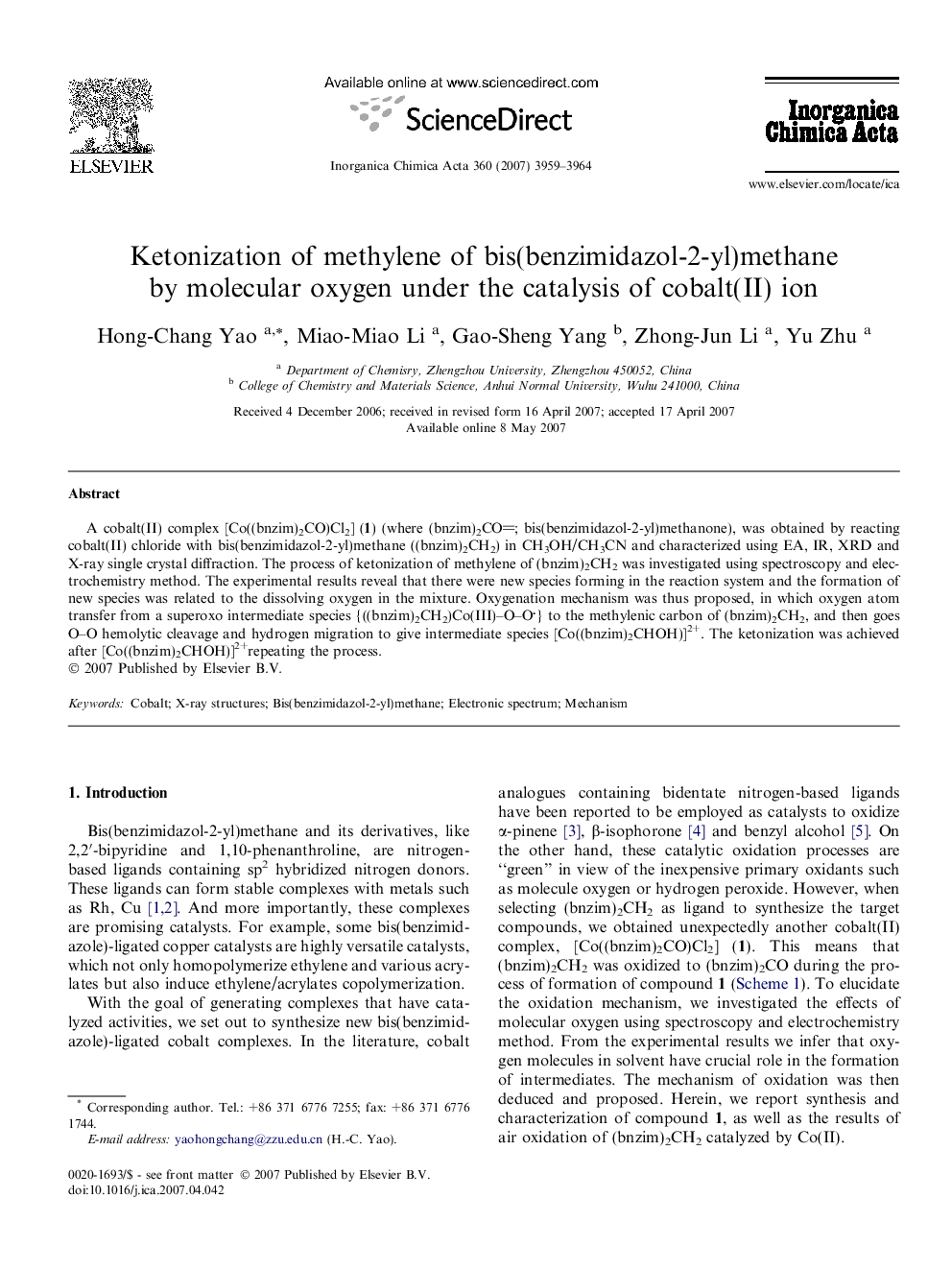| Article ID | Journal | Published Year | Pages | File Type |
|---|---|---|---|---|
| 1309369 | Inorganica Chimica Acta | 2007 | 6 Pages |
A cobalt(II) complex [Co((bnzim)2CO)Cl2] (1) (where (bnzim)2CO; bis(benzimidazol-2-yl)methanone), was obtained by reacting cobalt(II) chloride with bis(benzimidazol-2-yl)methane ((bnzim)2CH2) in CH3OH/CH3CN and characterized using EA, IR, XRD and X-ray single crystal diffraction. The process of ketonization of methylene of (bnzim)2CH2 was investigated using spectroscopy and electrochemistry method. The experimental results reveal that there were new species forming in the reaction system and the formation of new species was related to the dissolving oxygen in the mixture. Oxygenation mechanism was thus proposed, in which oxygen atom transfer from a superoxo intermediate species {((bnzim)2CH2)Co(III)–O–O} to the methylenic carbon of (bnzim)2CH2, and then goes O–O hemolytic cleavage and hydrogen migration to give intermediate species [Co((bnzim)2CHOH)]2+. The ketonization was achieved after [Co((bnzim)2CHOH)]2+repeating the process.
Graphical abstractA new cobalt(II) complex, Co((bnzim)2CO)Cl2, was obtained unexpectedly using (bnzim)2CH2 as ligand. The change of the ligand was investigated using electronic spectrum and cyclic voltammetry. Mechanism of Co-catalyzed oxidation is proposed.Figure optionsDownload full-size imageDownload as PowerPoint slide
